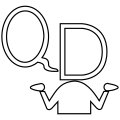[First posted in April 2009; most recently updated 31 August 2017]
The history of travel, travelers, and travel writing is an academic discipline in it's own right. Travelers accounts of journeys from before Pausanius to the present form an important corpus of descriptive documentation of ancient monuments and sites, many of them no longer visible. ASTENE: The Association for the Study of Travel in Egypt and the Near East organizes conferences and publishes a Bulletin devoted to the topic. The venerable Hakluyt Society has been the focus of publication of scholarly editions of primary records of voyages, travels and other geographical material since 1846. Shirley Weber's compendious bibliography Voyages and travels in Greece, the Near East, and adjacent regions, made previous to the year 1801; being a part of a larger catalogue of works on geography, cartography, voyages and travels, in the Gennadius Library in Athens has been available online for some time (though it has been brought to my attention that it in no longer open access).
The discipline seems to be an attractive one for the development of open access digital libraries.
- American Travelers in Italy is a collected and curated at the Harold B. Lee Library, Brighsam Young University.
- Early Explorers in Egypt & Nubia. Daniele Salvoldi's blog collects a wide variety of useful documentation, in particular those tagged as On-Line resources.
- The Middle East in Early Prints and Photographs (NYPL Digital Gallery). Several thousand prints and photographs contained in works from the 17th century to the beginning of the 20th century.
- TIMEA: Travellers in the Middle East Archive. Based at Rice University, this library includes images, texts, maps, and research and reaching guides. The seventy eight digitized books in the collection focus on Egypt, but cover a range of the eastern Mediterranean.
- Traveling with Pausanias: Using Google Earth to Engage Students with Ancient Maps, by John Gruber-Miller
- Travel Literature on Southeast Europe and the Eastern Mediterranean 15th-19th centuries. This is a component of PANDEKTIS - A Digital Thesaurus of Primary Sources for Greek History and Culture, produced by the National Hellenic Research Foundation, Athens. It includes descriptive metadata on more than three thousand items, many of which include digitized facsimiles.
- Travels in Southeastern Europe. This collection is a component of the University of Michigan's
- Travelogues: Travellers' Views
- Digital Library Collections and Publications. It includes 137 items, mostly scanned volumes, with a focus on Bosnia and Hercegovina. Many of the volumes include travel to other parts of the Mediterranean and Near East during the period of the Ottoman Empire.
- Farabi Digital Library - Voyages in Middle East Selected collection of media about Middle East and its history, culture & geography. It includes 196 titles. Other component of the Farabi Digital Library relate to Turkey and the Ottoman Empire.
I encourage readers here to let me know by means of the comments or otherwise, of other useful open access collections.




























